This Week At Angama #95
29 November 2019 | This Week at Angama | Adam Bannister
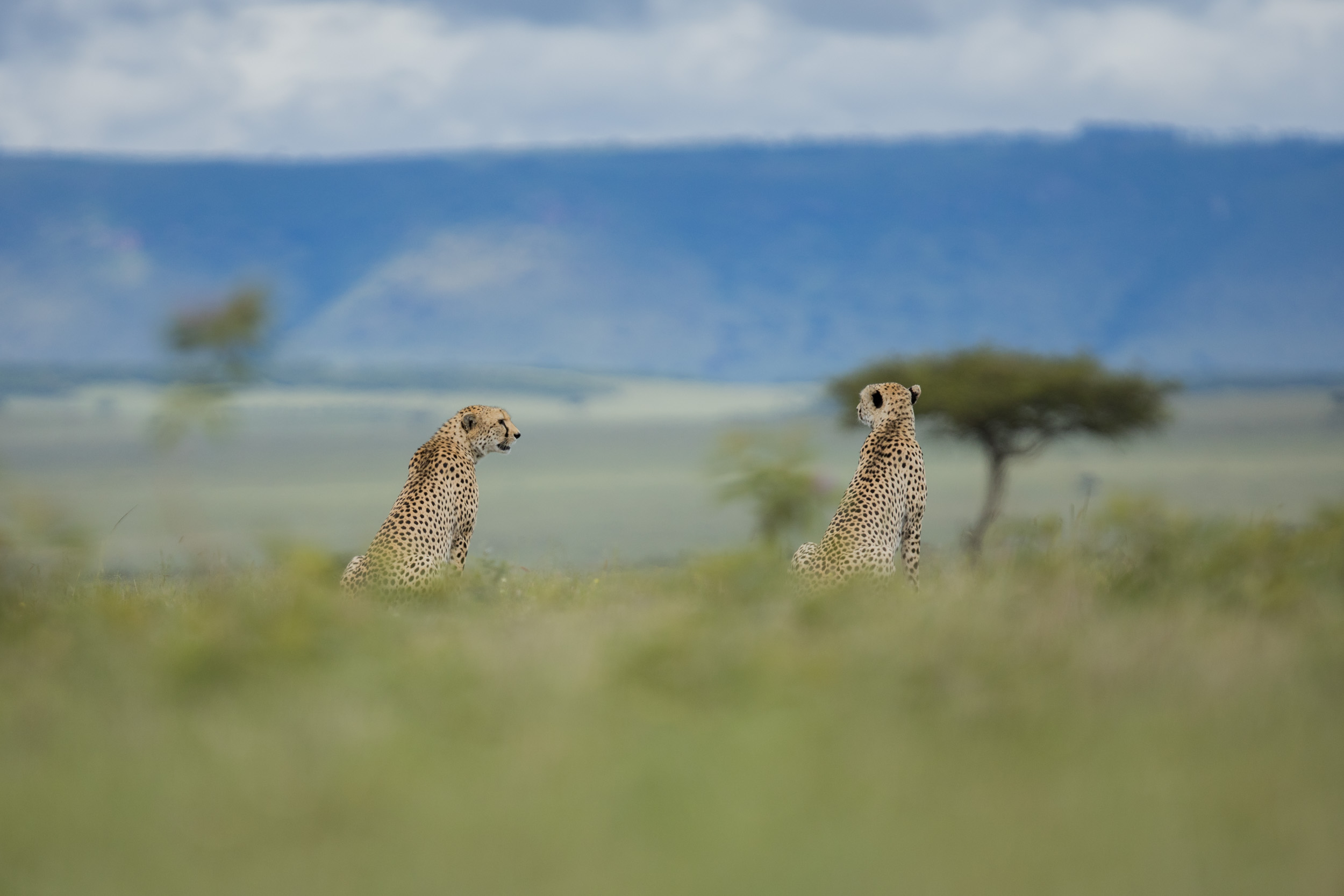
I remember November 2018 clearly – I was amazed at how many lions one could find on a drive out in the lush green grasslands. An influx of young male lions was creating havoc with regards to pride dynamics. 2019 is following suit. Just three drives resulted in sightings of 34 different lions, including 8 males. How can one resist loving the Mara when they march around in short green grass, backed by dramatic clouds and thunderstorms? Enjoy a big-cat heavy This Week At Angama. [f 2.8, 1/8000, ISO 500, -0.33]
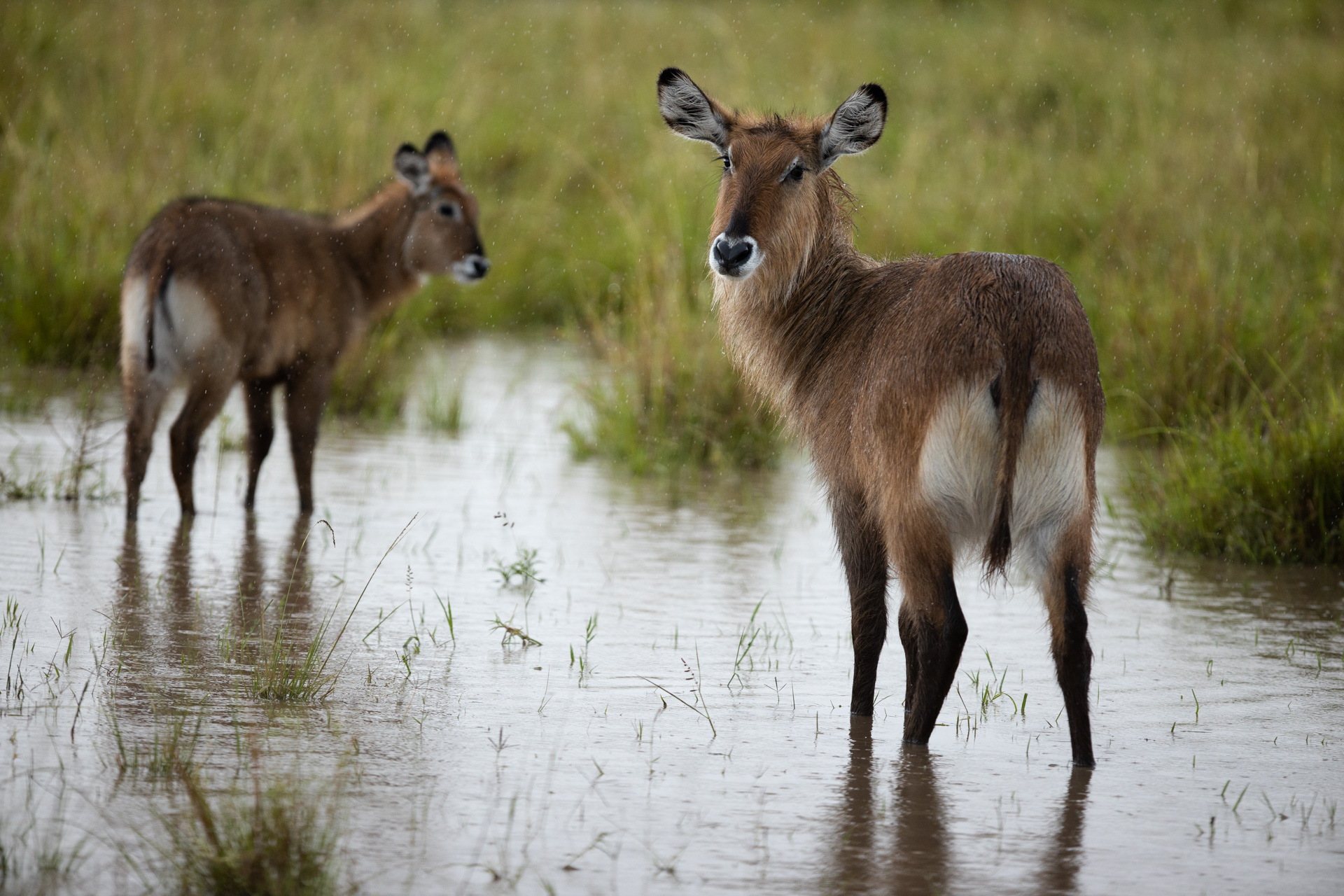
The rains have arrived and the low lying areas of the Mara are waterlogged. The animals all look so healthy, clean and happy; none more so than the waterbuck. [f 2.8, 1/1000, ISO 1250]
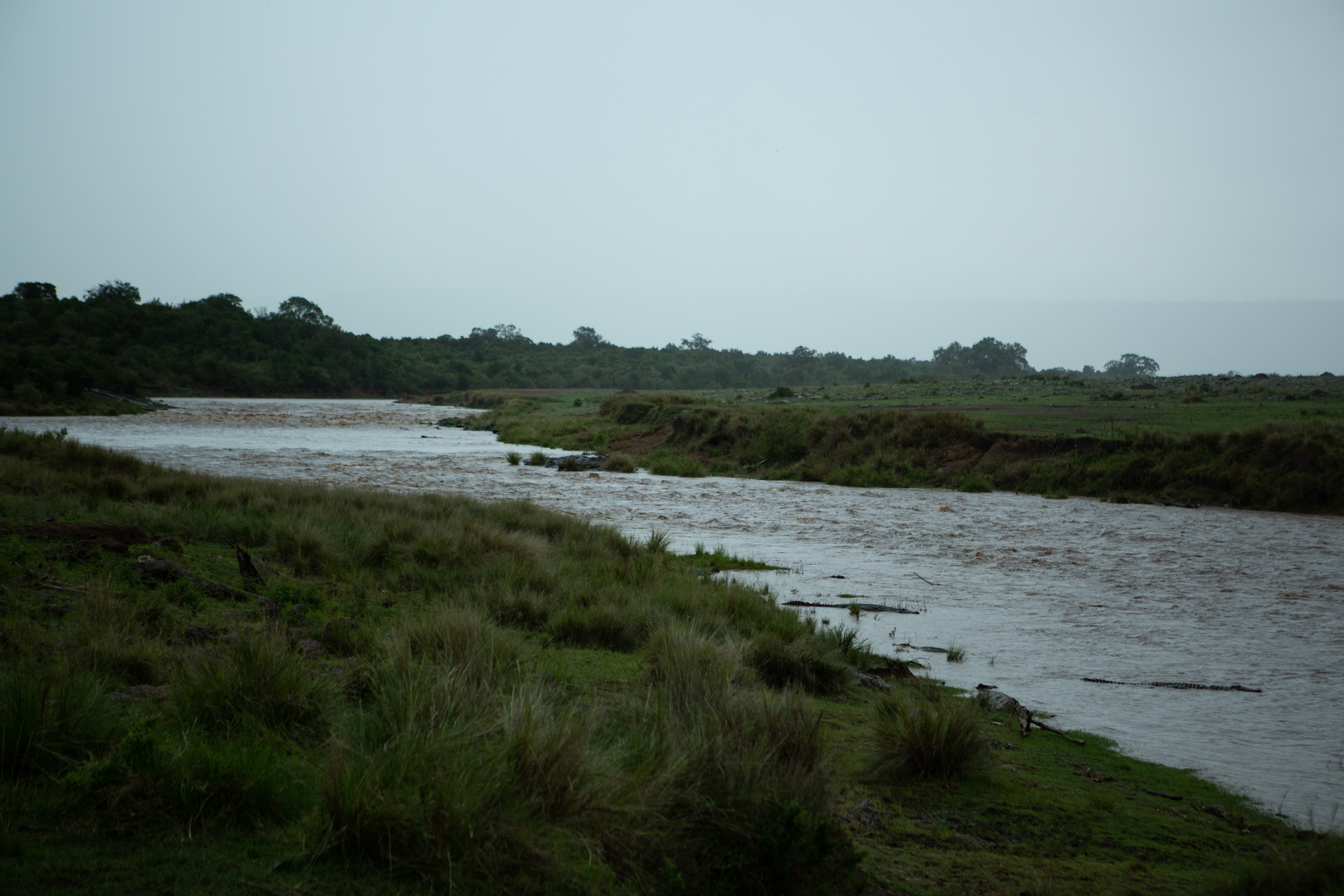
The Mara River is in full force. Pictured here is ‘Main Crossing’ – a reminder that earlier this year this river so nearly dried up. [f 2.8, 1/400, ISO 500]
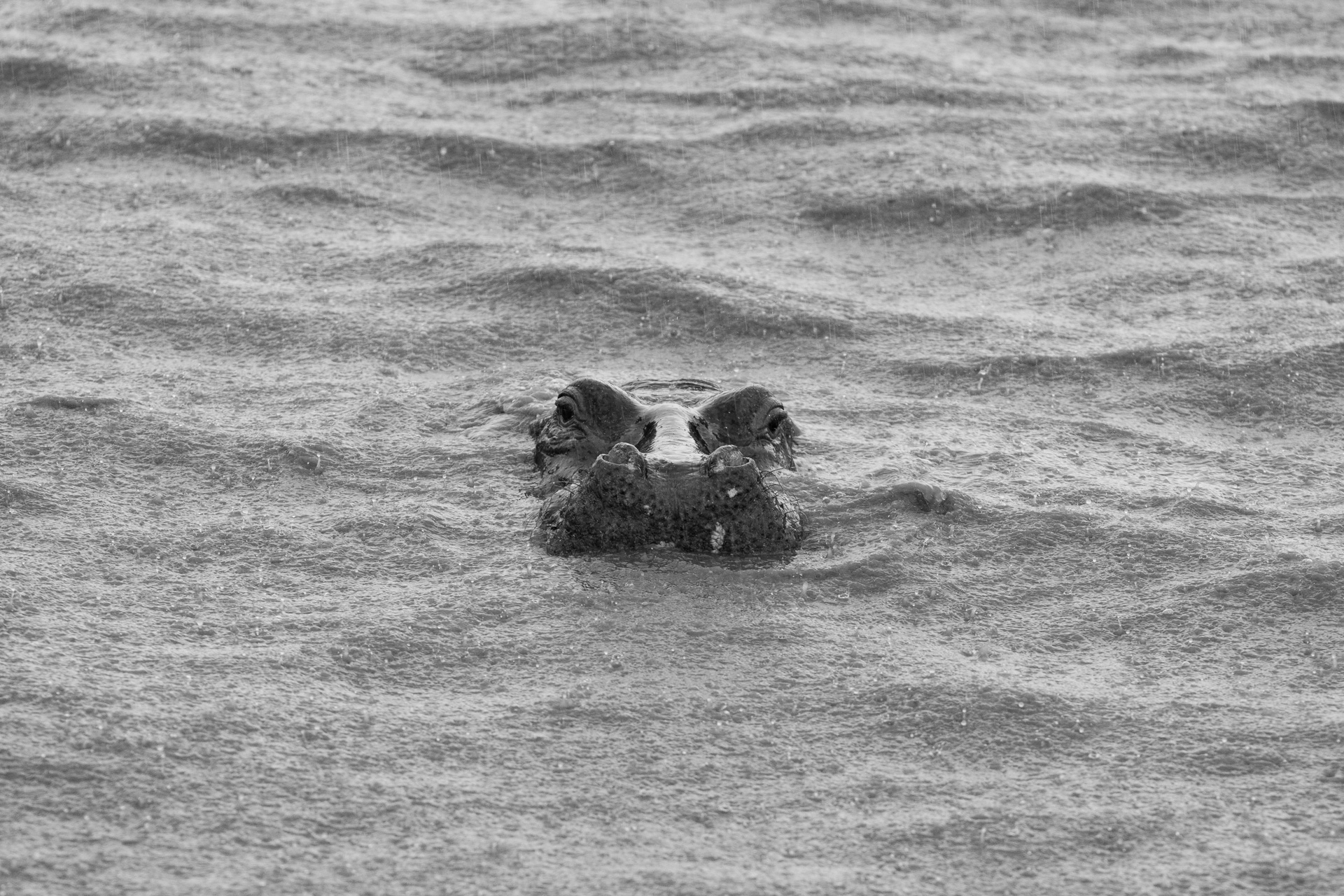
The river is flowing so strongly that most of the hippo have moved out of the deeper river channels and into the smaller inlets and drainage lines. [f 4.5, 1/250, ISO 800]

Elephant herds continue to move across the marshy areas constantly feeding. [f 2.8, 1/1000, ISO 3200]
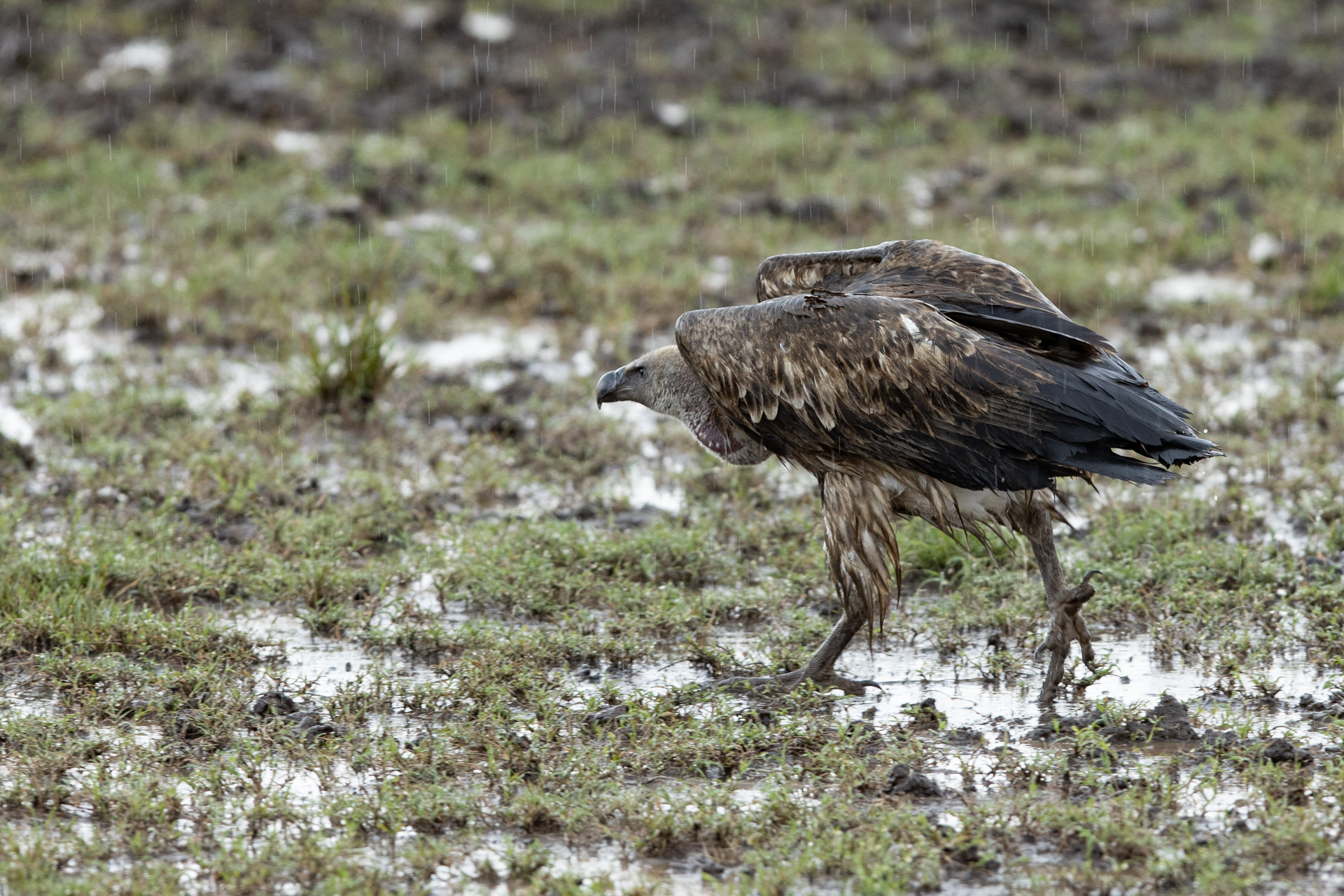
Not all the Mara’s inhabitants love the rain. A white-backed vulture is so drenched it is momentarily grounded. [f 4.5, 1/250, ISO 800]

All the depressions, drainage lines and hollows are filled with water. Interestingly, many zebra have been seen heading north from the Serengeti and back into the Mara. I don’t recall seeing this last year. [f 7.1, 1/500, ISO 400, -0.33]
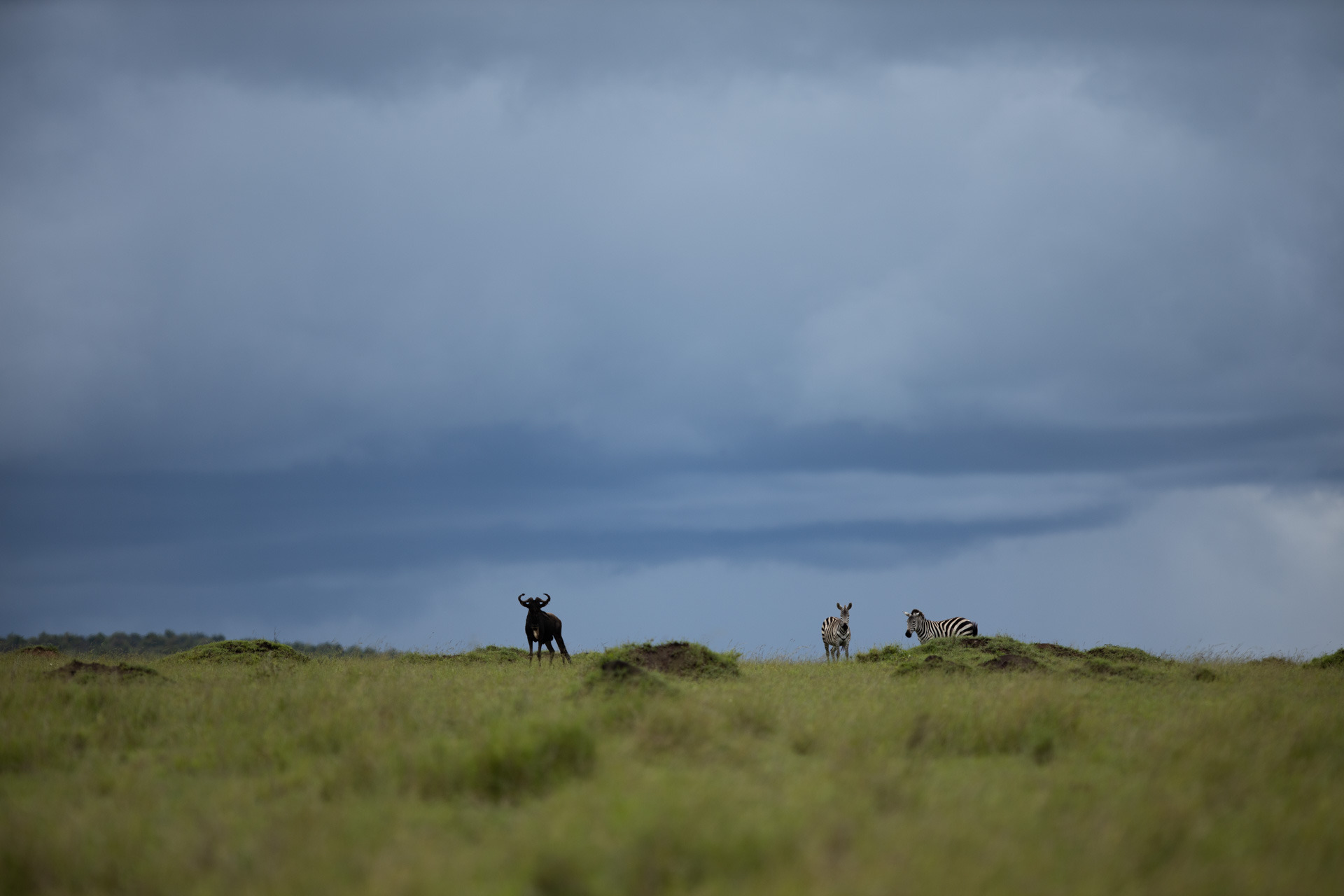
Only a handful of wildebeest remain behind. Not long ago there were hundreds of thousands right here. [f 2.8, 1/3200, ISO 160]

Down by the Mara bridge the delightful grey-capped social weavers keep visitors entertained. The size of a sparrow, I believe this little fellow is making his TWAA debut. [f 2.8, 1/2500, ISO 160, -0.33]
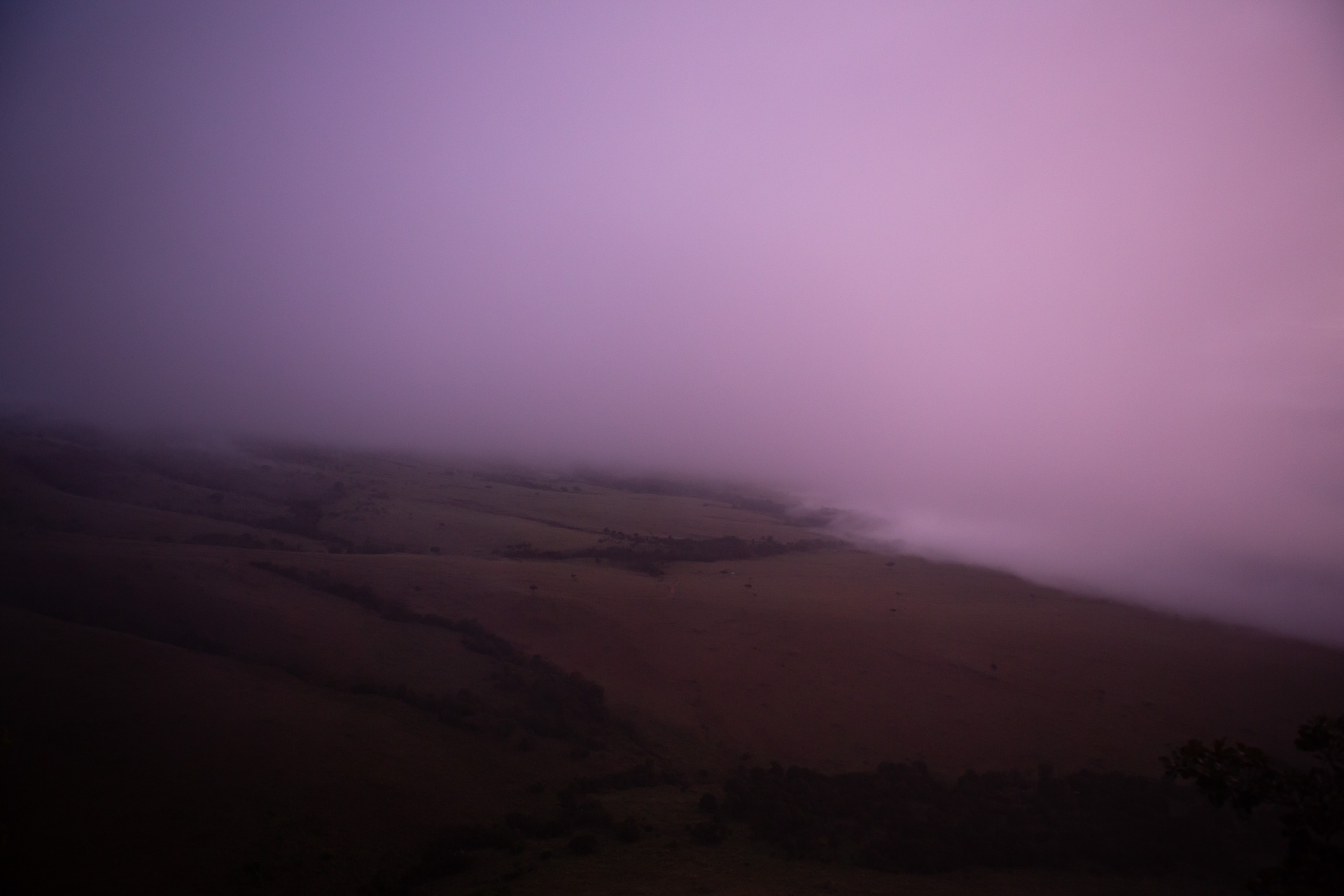
Every morning the view from our deck is different. Lately, we have been having moody misty sunrises. [f 2.8, 1/60, ISO 1600]
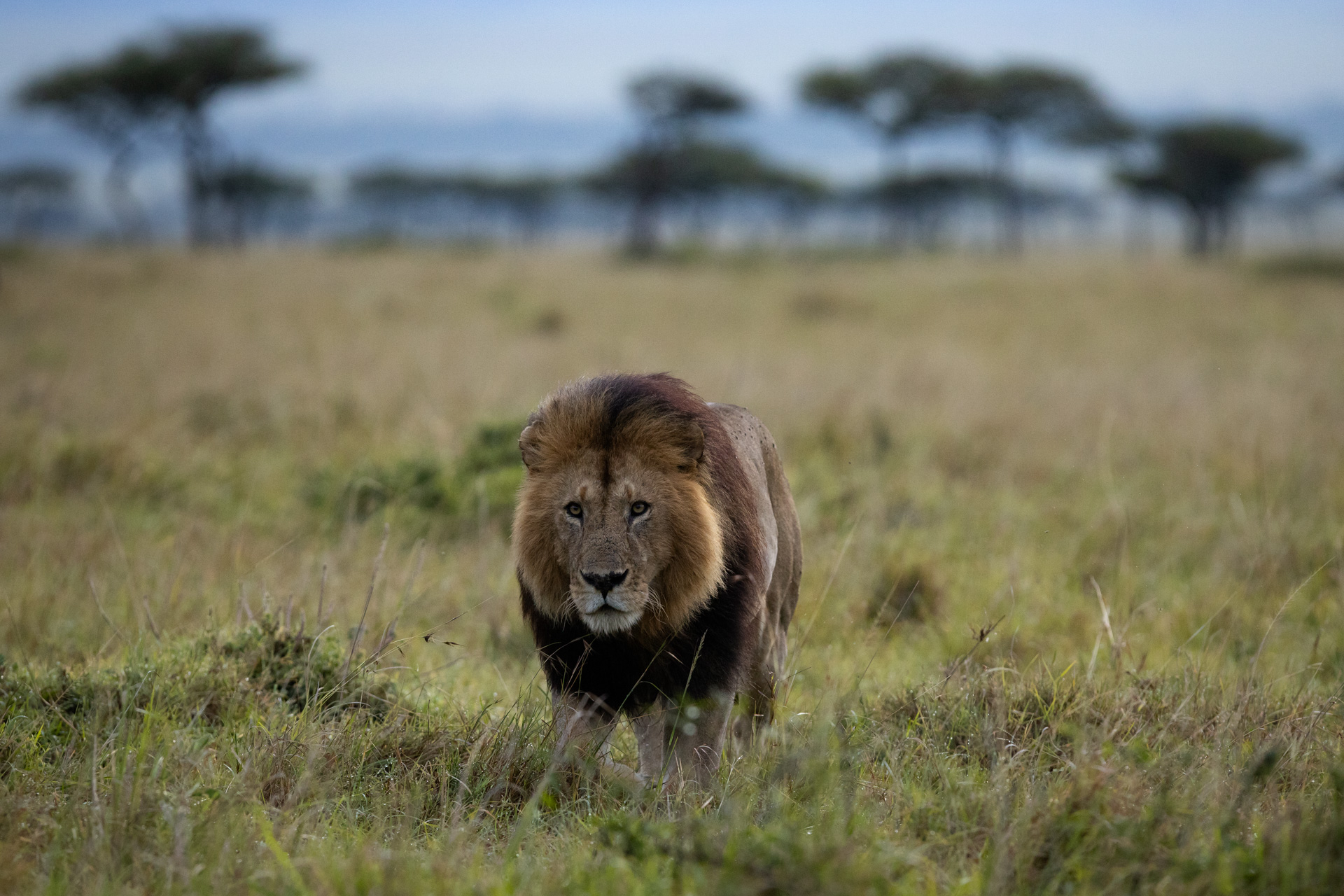
An early morning drive started off with a bang as Short-Tail, the dominant male in the northern Triangle, moved through the wet grass. In very low light this was the perfect opportunity to test my camera under high ISO conditions. I am fairly happy with the result. [f 4.0, 1/1000, ISO 4000, -0.67]
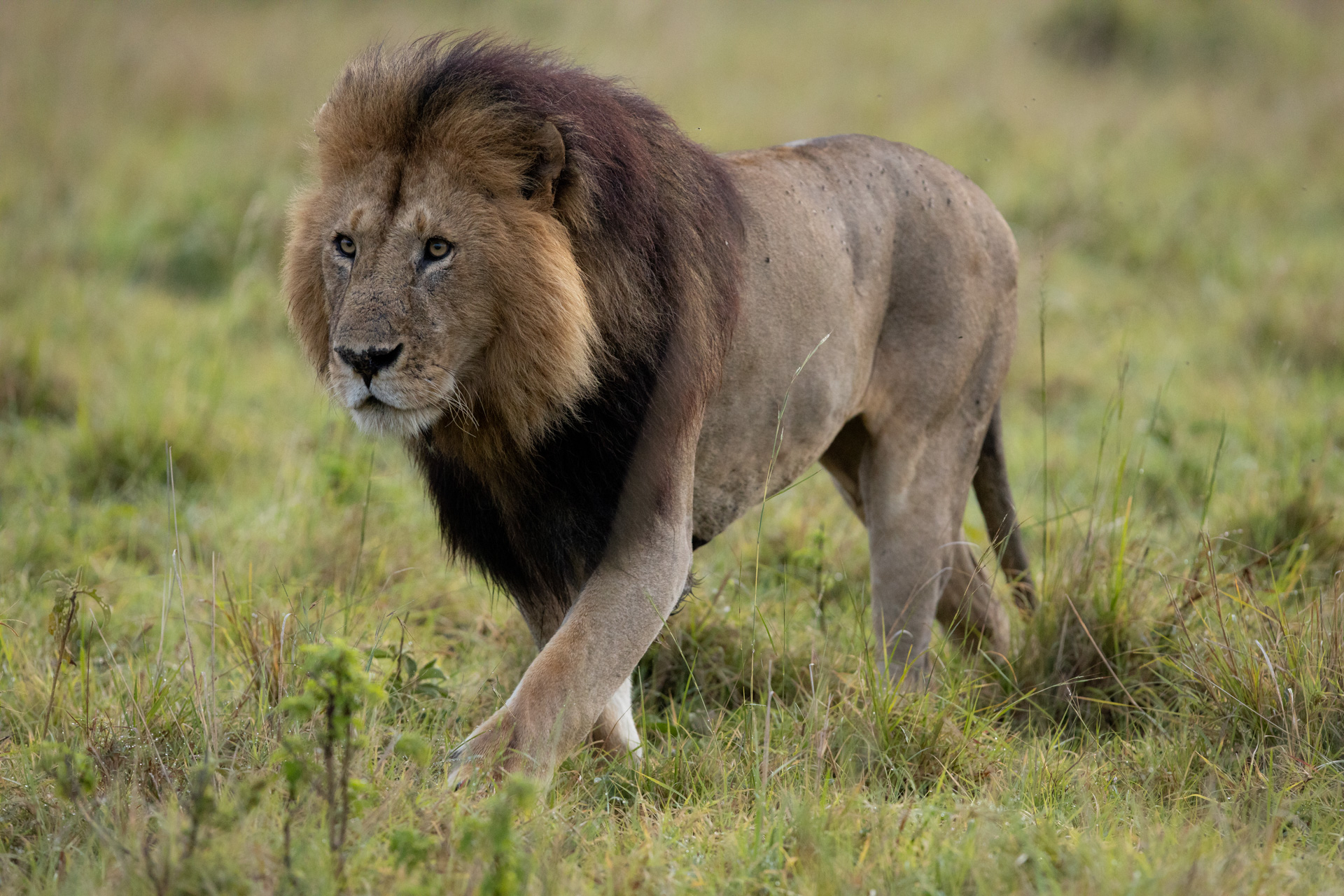
Photographing male lions, in my opinion, is all about three things: 1) the eyes, 2) the movement of the front legs, and 3) the low angle. [f 4.0, 1/4000, ISO 4000, -0.67]
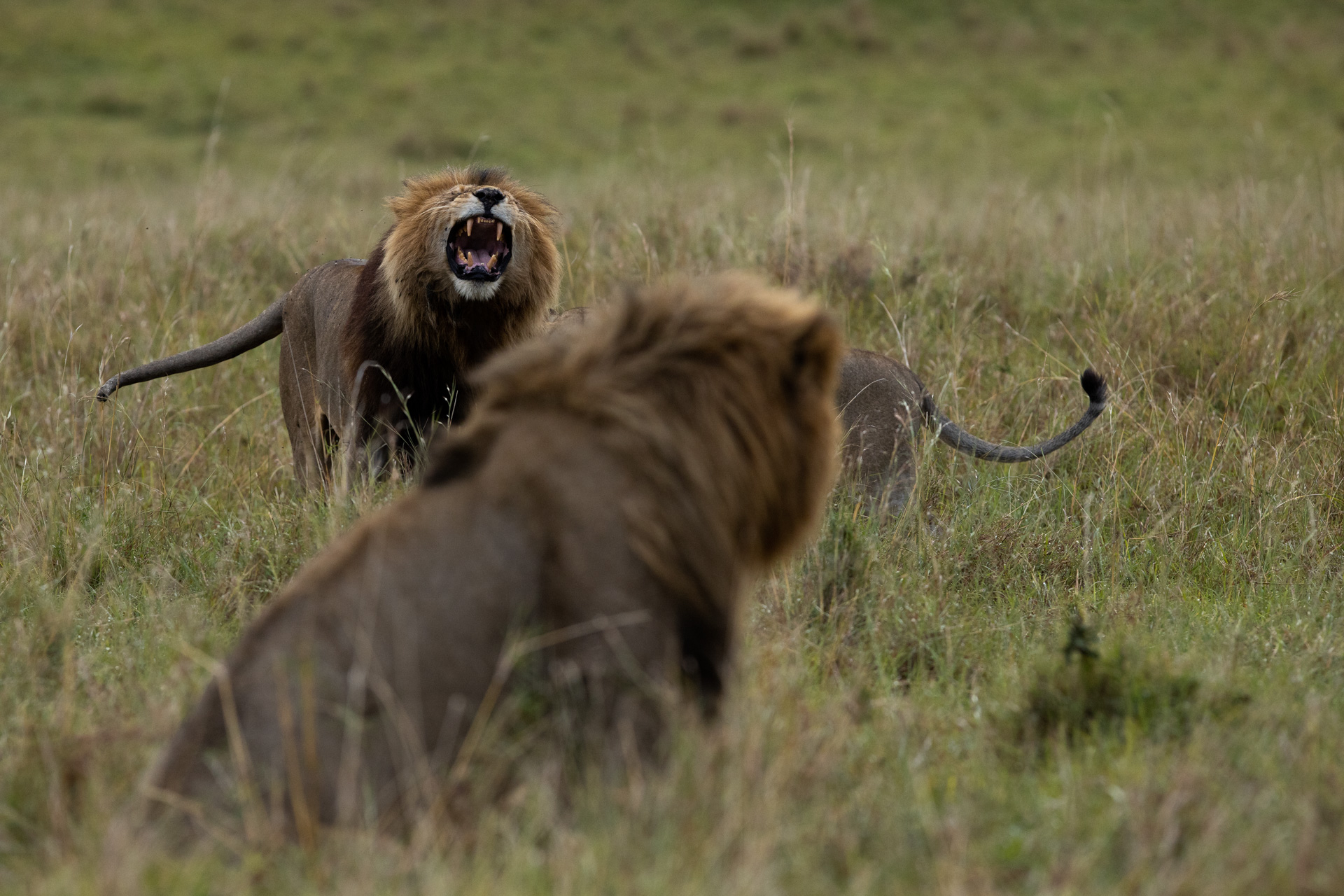
Short-Tail met his coalition partner Fang, and then these two tracked down five lionesses from the Angama Pride. What you can see here is a ‘flehmen grimace’ used by animals to open up the Jacobson’s organ, which in turn allows scents and pheromones to be interpreted. Short-Tail is testing if the female is ready for mating. [f 4.5, 1/1250, ISO 1600, -0.67]

Eye to eye with a lioness from the Angama Pride [f 4.0, 1/1000, ISO 800, -0.33]
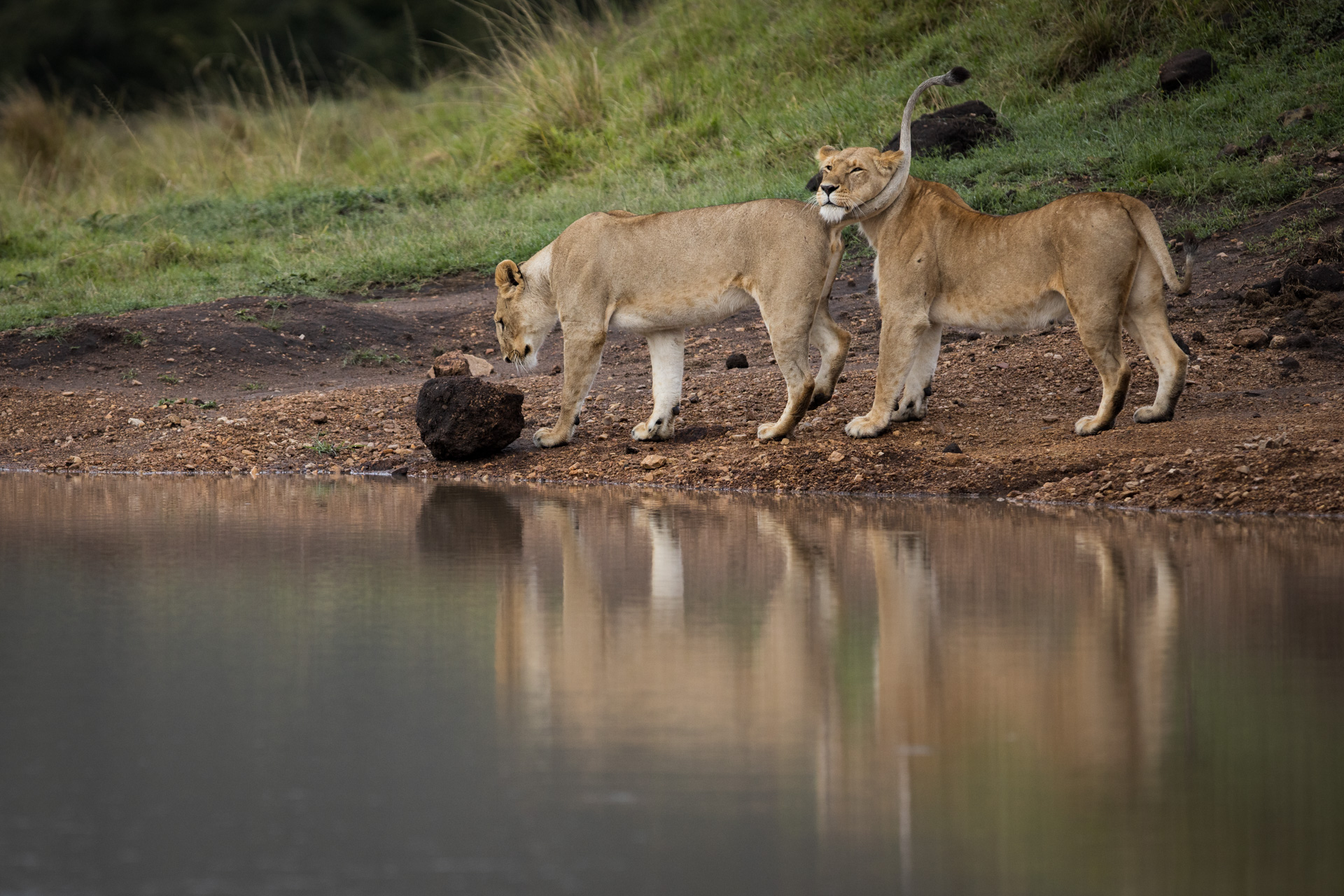
Of late, the Angama Pride have been very scarce and we can go many days without knowing where they are. We are delighted to have seen that the five members all look in good health and the bond between them is strong. [f 3.5, 1/1600, ISO 800, -0.33]
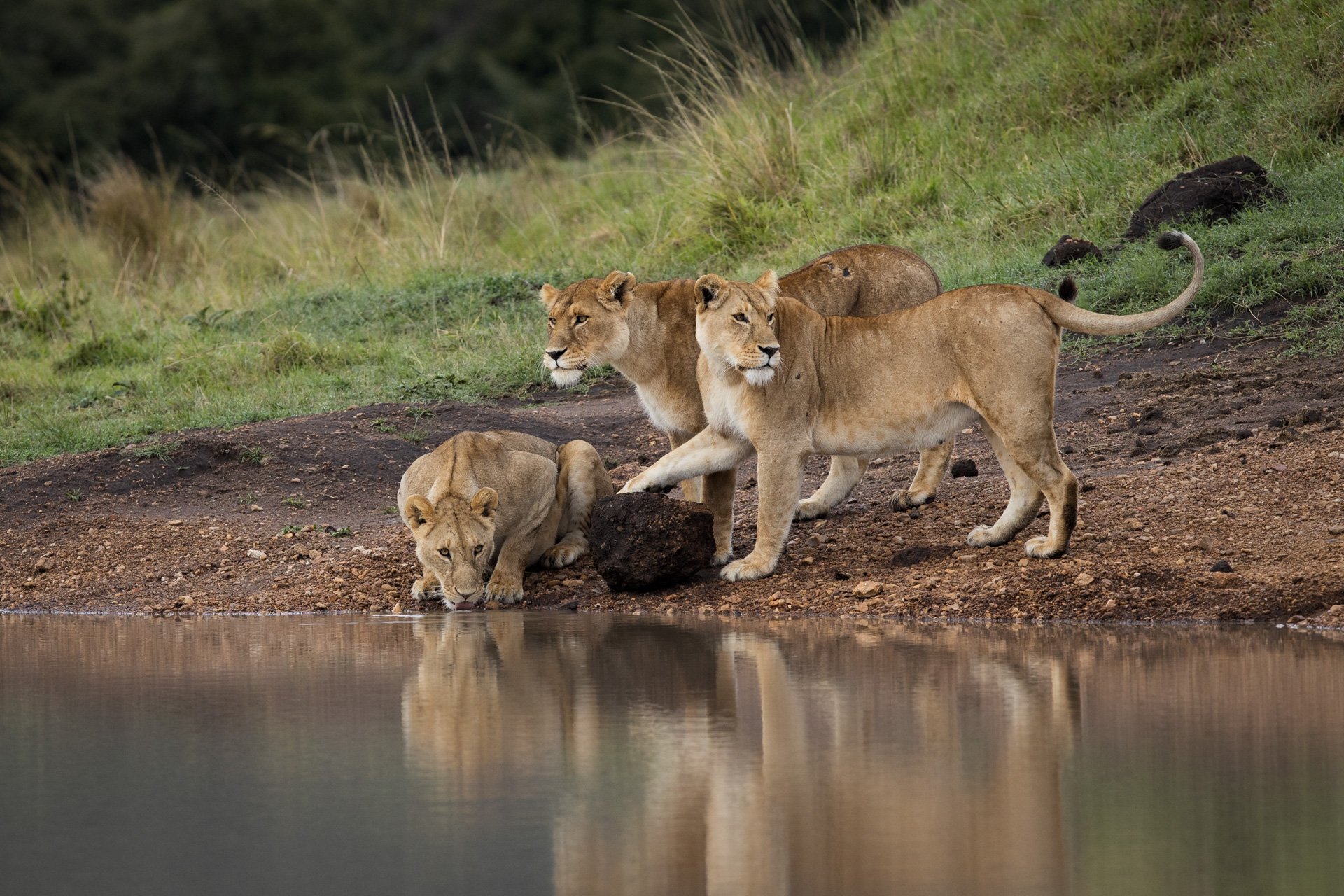
A piece of conglomerated soil/rock provided much entertainment as these lions settled by a pond for an early morning drink. [f 5.0, 1/800, ISO 800, -0.33]
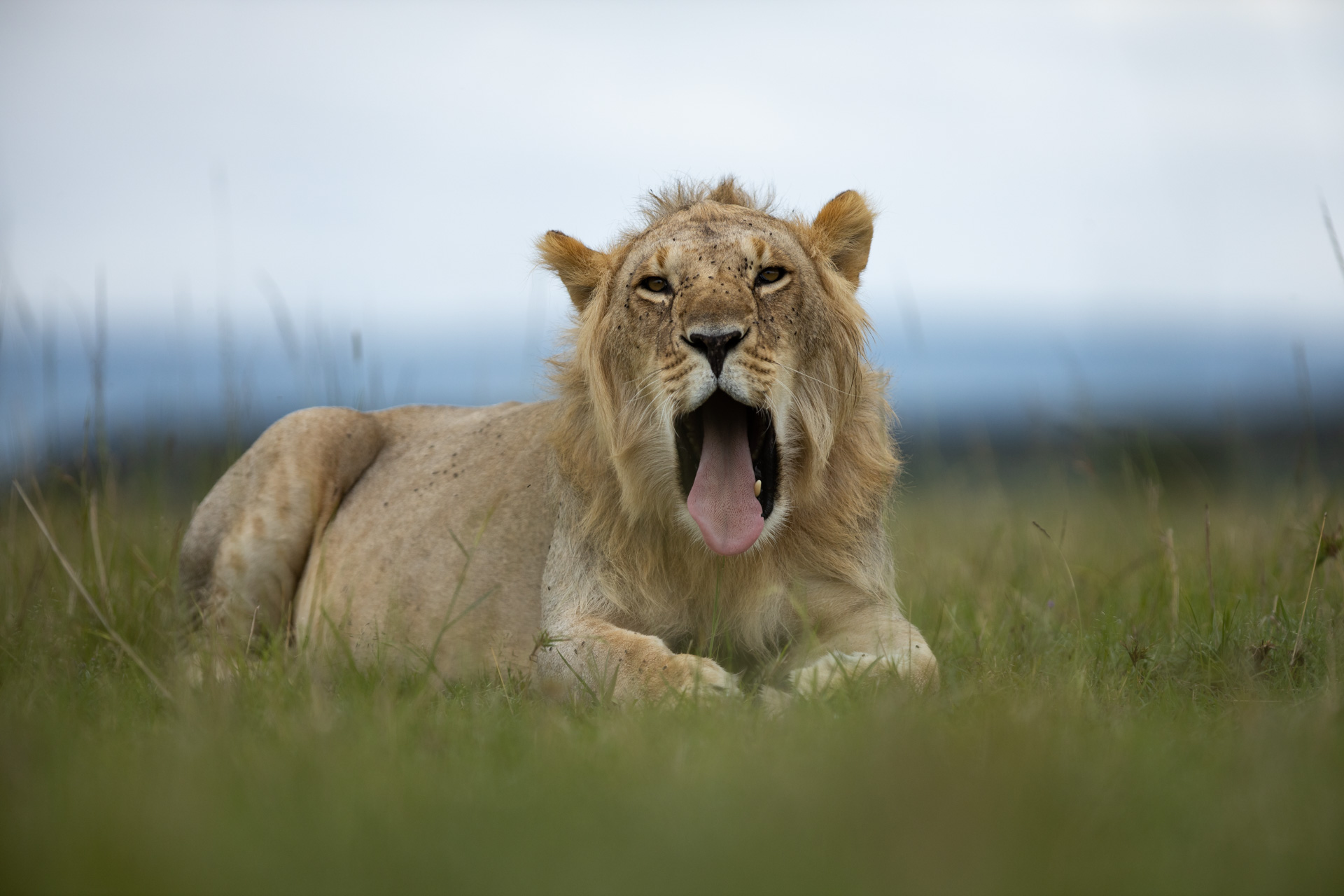
Far down south, along the border with Tanzania, a small pride of three (two females and a young male), have been seen daily sleeping under the trees. Careful positioning and holding the camera low allowed me to capture this yawn. [f 2.8, 1/4000, ISO 400, -0.33]
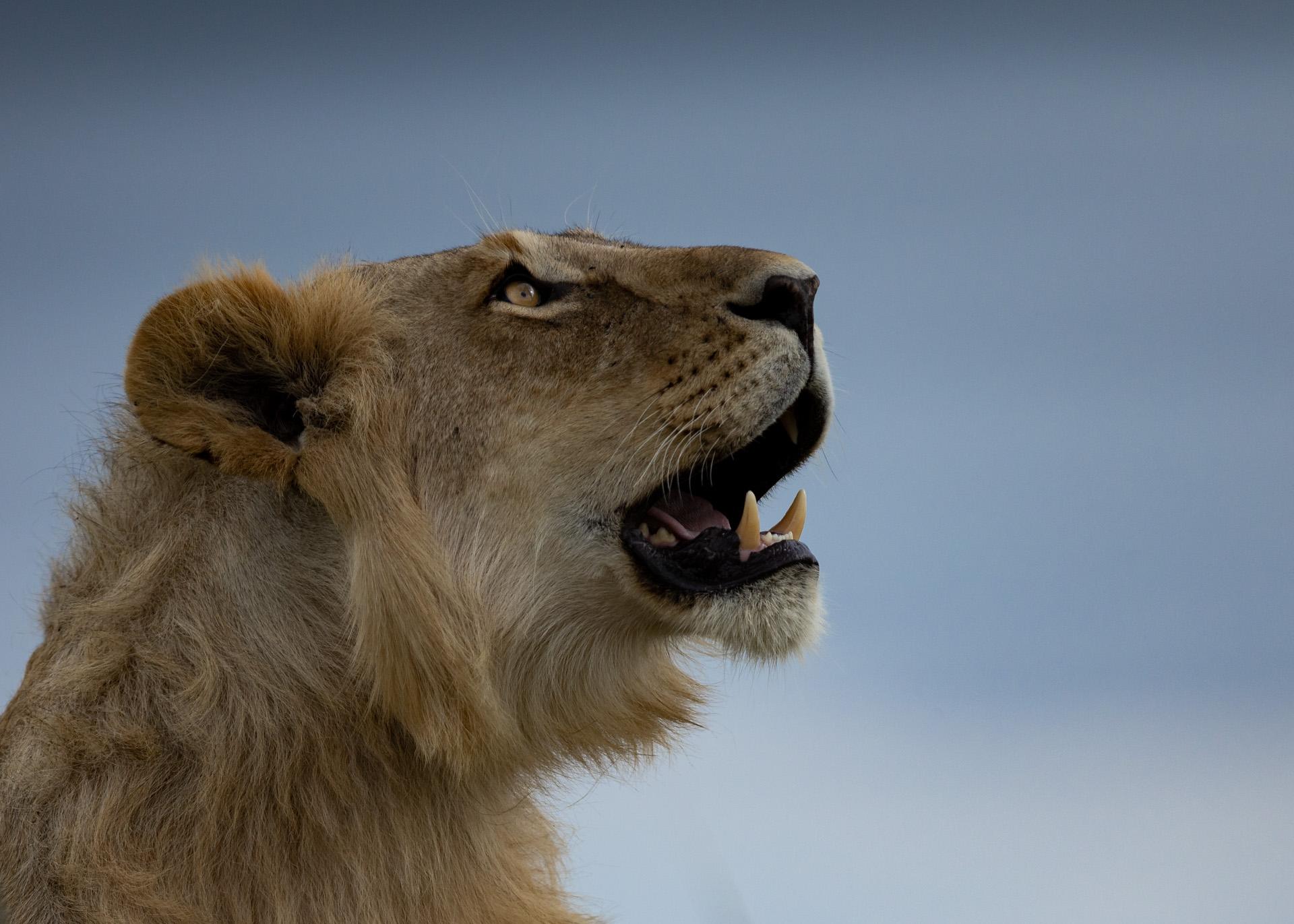
I just love the glint in his eye and the blue background. [f 2.8, 1/6400, ISO 400, -0.33]
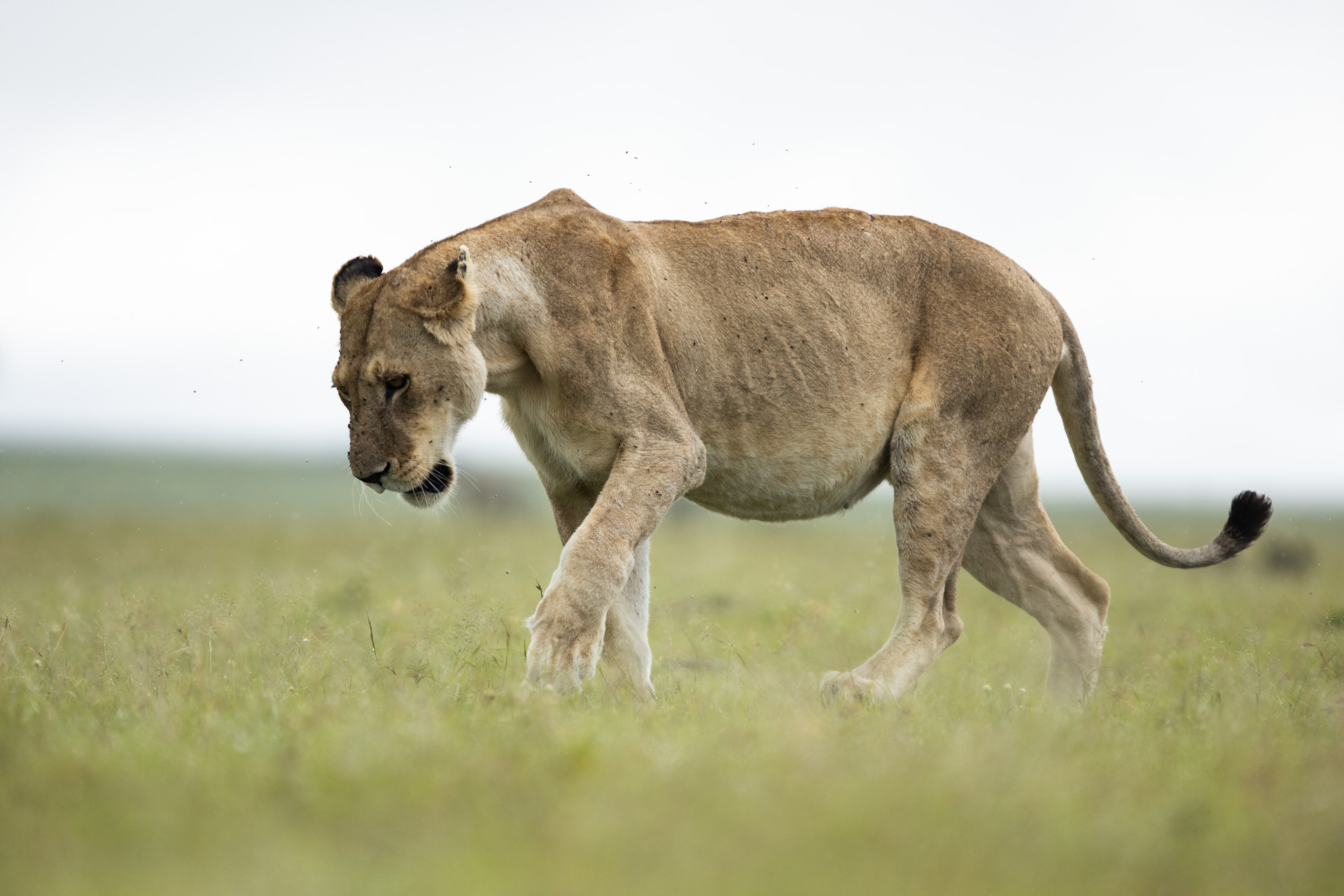
The older lioness is quite badly injured with large swelling on her front left paw. We are unsure of the injury, or what caused it. She is barely able to put any weight on it, but she has the support of two other lions and her belly is very full – so we are hopeful of a recovery. [f 2.8, 1/6400, ISO 500]
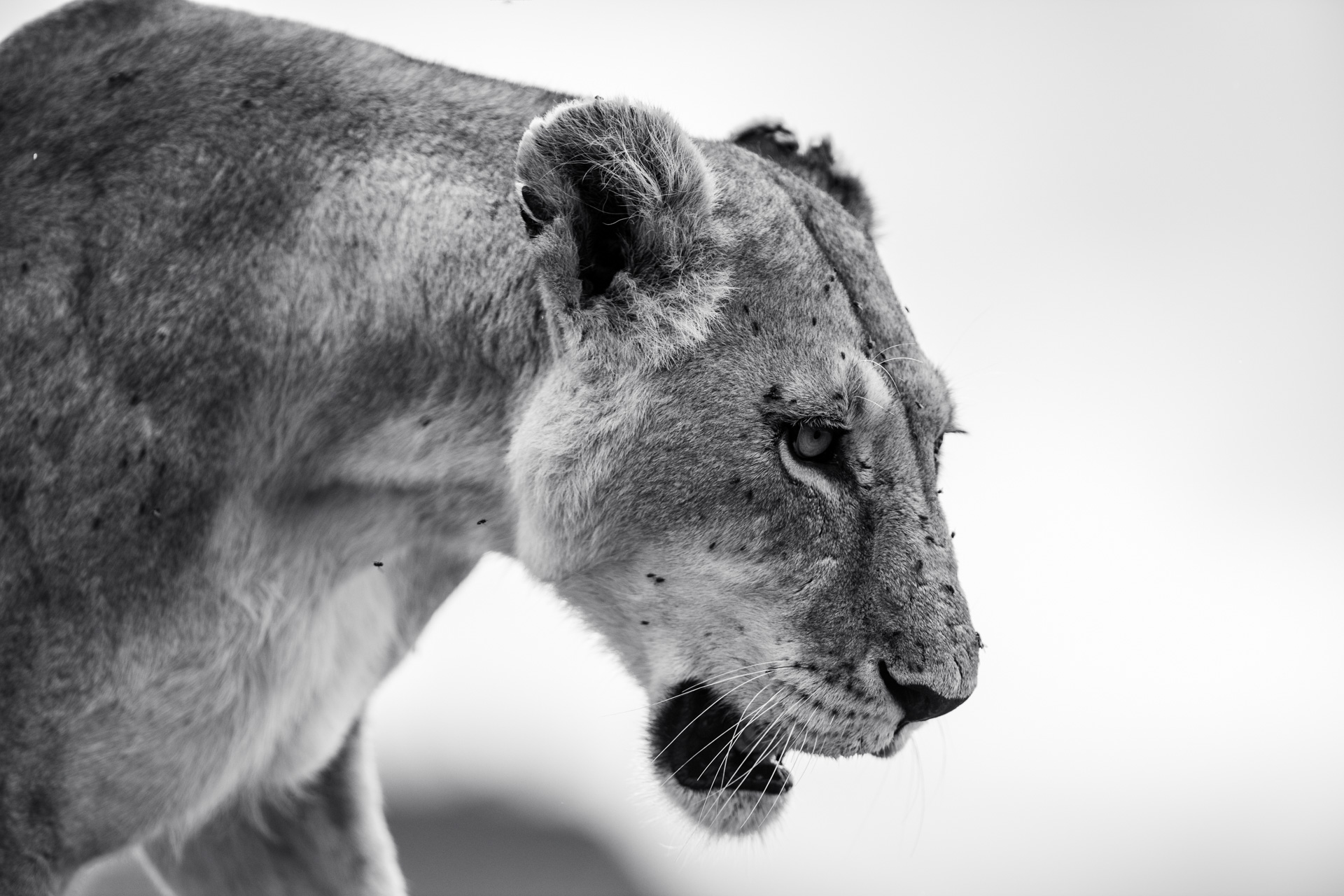
Her tattered ears and blackened nose are indicators of an long life. However, even in her weakened state, she walks with elegance, pride and determination. [f 2.8, 1/6400, ISO 500]

About a kilometre away and a male lion roams the plains. At one point, parked on a hill, we could see four different lion sightings. [f 2.8, 1/3200, ISO 160, -0.33]
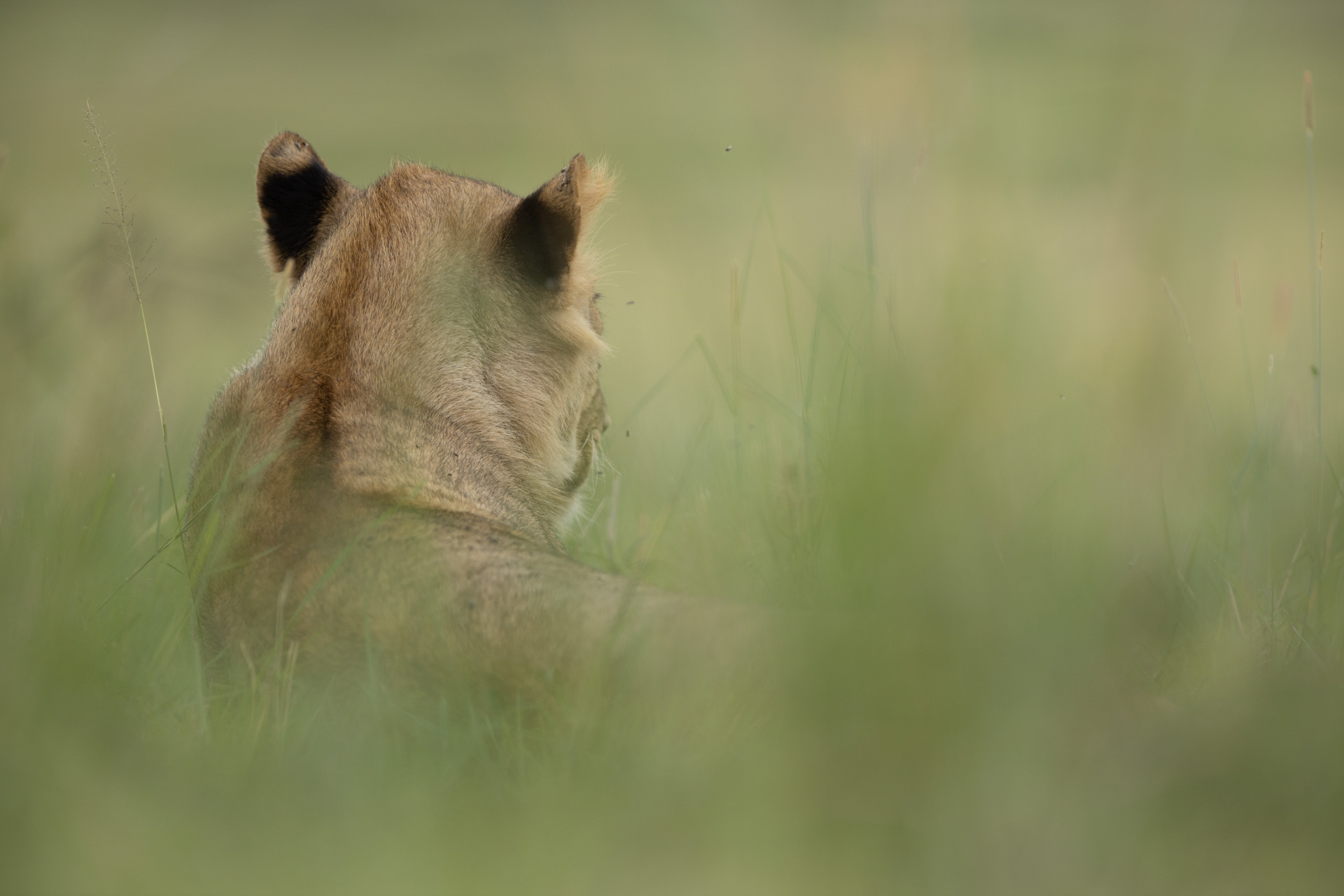
The tell-tale black tips at the back of a lions ears…a follow me sign to help keep pride members together in the long grass. [f 4.0, 1/4000, ISO 400, -0.33]

In near-impossible lighting conditions, I tried to create a different perspective and shot of the Sausage Tree Pride as they slept in the shade of a fig tree in the midday heat. [f 13.0, 1/400, ISO 400, +0.33]
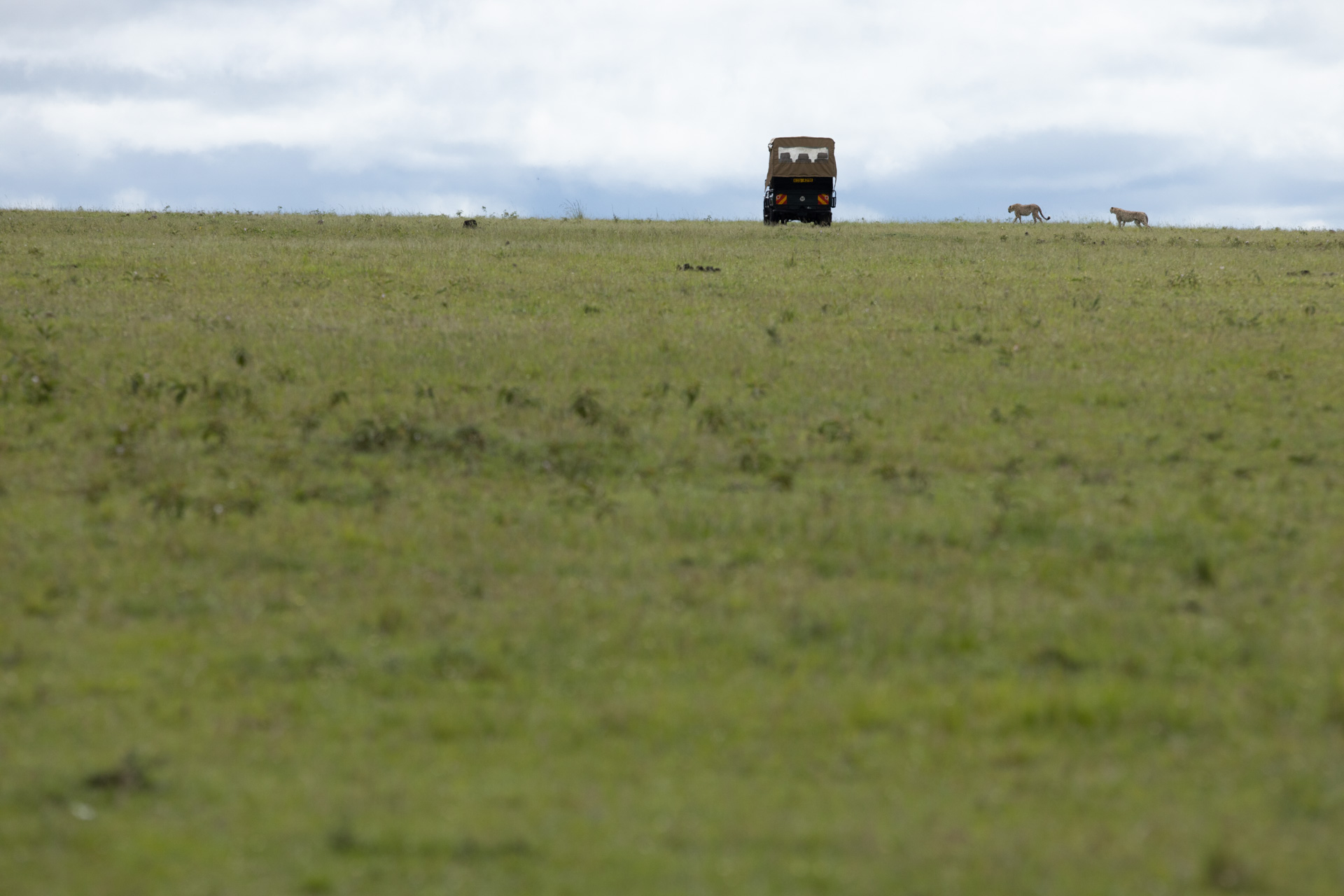
The Border Brothers have been cooperative this week, with near daily sightings. I went for an unusual composition with the intention of highlighting the vastness of the short green grass, creating a scene capturing the beauty of the Mara Triangle’s southern grasslands. [f 5.6, 1/4000, ISO 500, +0.33]
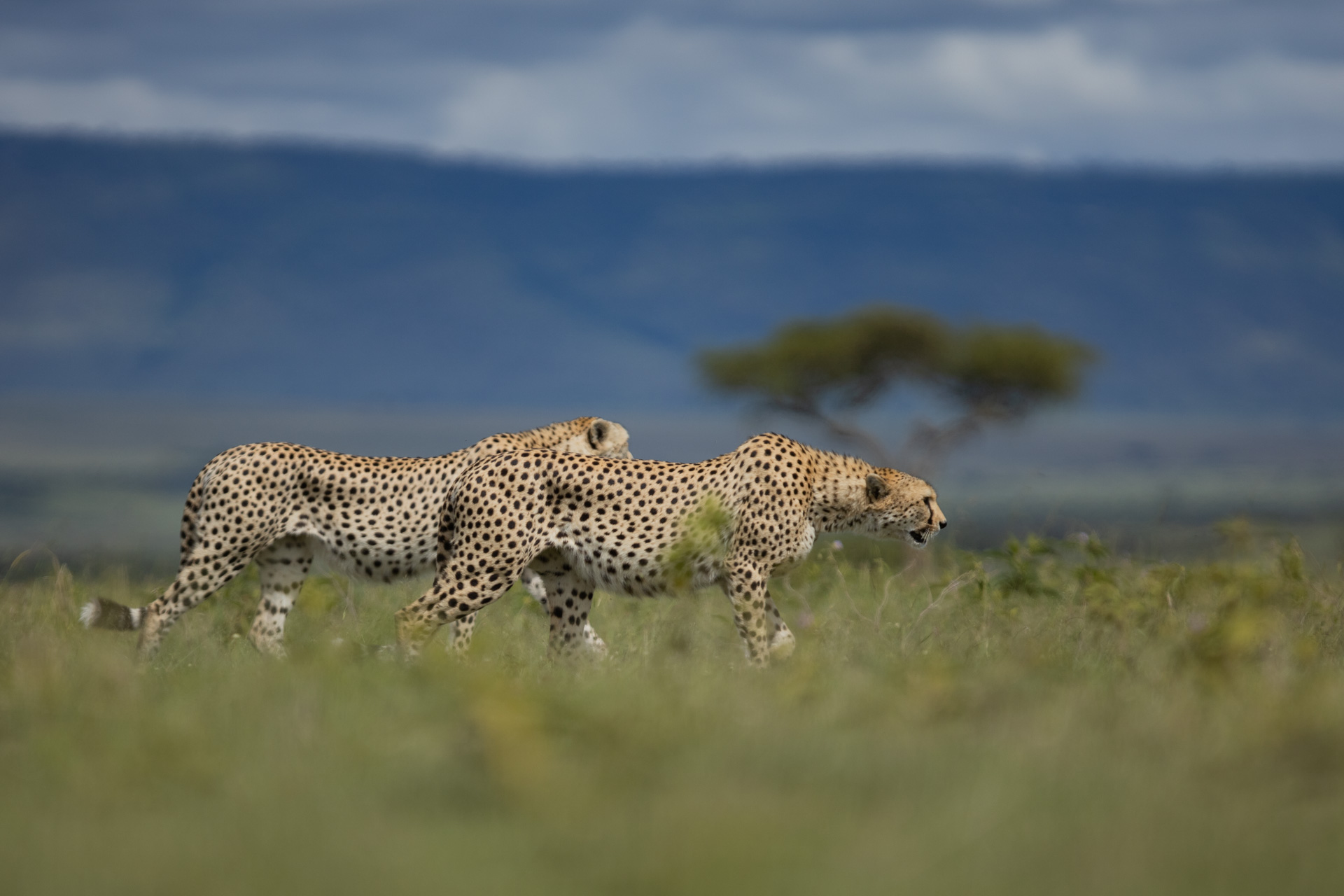
An extreme low angle of these two males makes them look like warriors on the move. The inclusion of the single tree, and the backdrop of the escarpment, shows context and completes the story. [f 4.0, 1/4000, ISO 400, -0.33]
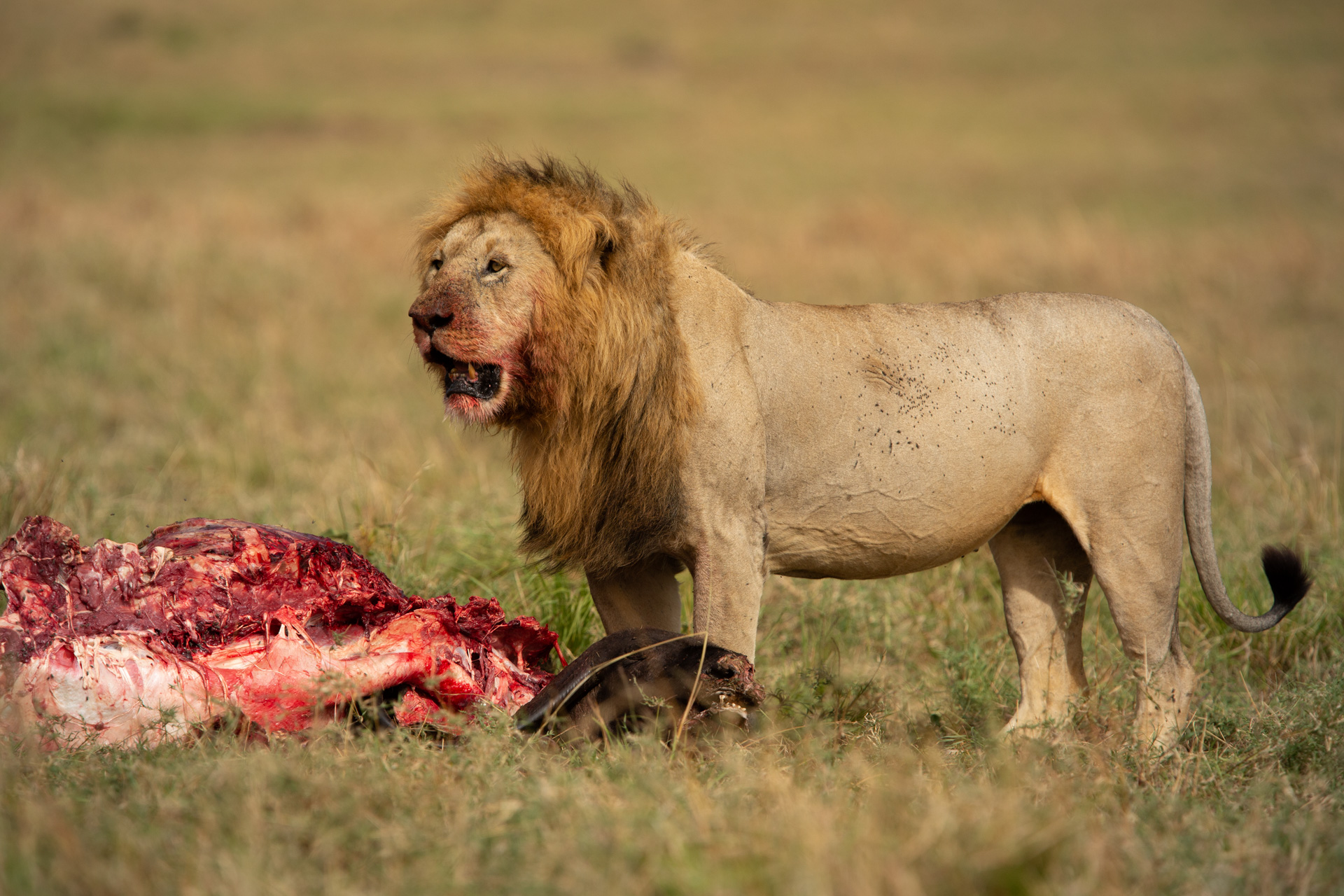
I put this photograph in as a reference shot more than anything else as it helps to paint a very interesting picture. One year ago it was Fang, and Short Tail, who were dominant over the Owino Pride. We have witnessed a change of leadership over the last few months. It looks like the Ol Donyo Paek male took control of Owino, and in the process forced this small pride to shift their territory massively further south within the Triangle. My last sighting of members of the Owino Pride was two weeks ago and they had moved more towards the Salt Lick area of the southern Triangle. [f 5.0, 1/3200, ISO 400, -0.33]
TAGGED WITH: Wildlife, Travel, Angama Mara, Wildlife Photography, Photographic Safari, This Week At Angama, Lions of the Mara


